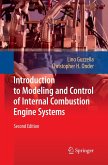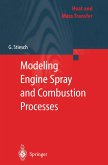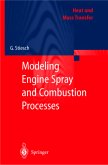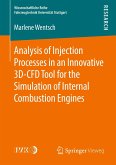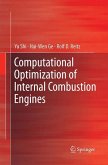The book focuses on all aspects of supercharging internal combustion engines. Charging systems and components, the theoretical basic relations between engines and charging systems as well as layout and evaluation criteria for best interaction are addressed in detail. Recent experiences in design and development of supercharging systems, improved graphical presentations and most advanced calculation and simulation tools are described. The book is prepared for students enrolled in mechanical engineering courses on the one hand, and for research-, development- and application-engineers, specialised in the field of supercharging systems for combustion engines, on the other leading to improved knowledge about benefits and problems of supercharging and providing help and tips for application engineers to design, optimise and develop supercharged internal combustion engines. A large number of selected examples as well as an outlook on possible future developments of supercharging systems finally close the book.
Supercharging the reciprocating piston internal combustion engine is as old as the engine itself. Early on, it was used to improve the high-altitude performance of aircraft engines and later to increase the short-term peak performance in sporty or very expensive automobiles. It took nearly 30 years until it reached economic importance in the form of the ef?ciency-improving exhaust gas turbocharging of slow- and medium-speed diesel engines. It took 30 more years until it entered high-volume automotive engine production, in the form of both mechanically driven displacement compressors and modern exhaust gas turbocharging systems. Since, in spite of promising alternative developments for mobile applications, the internal combustion engine will remain dominant for the foreseeable future, its further development is essential. Today many demands are placed on automobile engines: on the one hand, consumers insistonextremeef?ciency,andontheotherhandlawsestablishstrictstandardsfor,e.g.,noiseandexhaust gas emissions. It would be extremely dif?cult for an internal combustion engine to meet these demands without the advantages afforded by supercharging. The purpose of this book is to facilitate a better understanding of the characteristics of superchargers in respect to their physical operating principles, as well as their interaction with piston engines. This applies both to the displacementcompressorandtoexhaustgasturbochargingsystems,whichoftenareverycomplex. It is not intended to cover the layout, calculation, and design of supercharging equipment as such-thisspecialareaisreservedforthepertinenttechnicalliterature-buttocoverthosequestions which are important for an ef?cient interaction between engine and supercharging system, as well as the description of the tools necessary to obtain an optimal engine-supercharger combination.
Supercharging the reciprocating piston internal combustion engine is as old as the engine itself. Early on, it was used to improve the high-altitude performance of aircraft engines and later to increase the short-term peak performance in sporty or very expensive automobiles. It took nearly 30 years until it reached economic importance in the form of the ef?ciency-improving exhaust gas turbocharging of slow- and medium-speed diesel engines. It took 30 more years until it entered high-volume automotive engine production, in the form of both mechanically driven displacement compressors and modern exhaust gas turbocharging systems. Since, in spite of promising alternative developments for mobile applications, the internal combustion engine will remain dominant for the foreseeable future, its further development is essential. Today many demands are placed on automobile engines: on the one hand, consumers insistonextremeef?ciency,andontheotherhandlawsestablishstrictstandardsfor,e.g.,noiseandexhaust gas emissions. It would be extremely dif?cult for an internal combustion engine to meet these demands without the advantages afforded by supercharging. The purpose of this book is to facilitate a better understanding of the characteristics of superchargers in respect to their physical operating principles, as well as their interaction with piston engines. This applies both to the displacementcompressorandtoexhaustgasturbochargingsystems,whichoftenareverycomplex. It is not intended to cover the layout, calculation, and design of supercharging equipment as such-thisspecialareaisreservedforthepertinenttechnicalliterature-buttocoverthosequestions which are important for an ef?cient interaction between engine and supercharging system, as well as the description of the tools necessary to obtain an optimal engine-supercharger combination.



